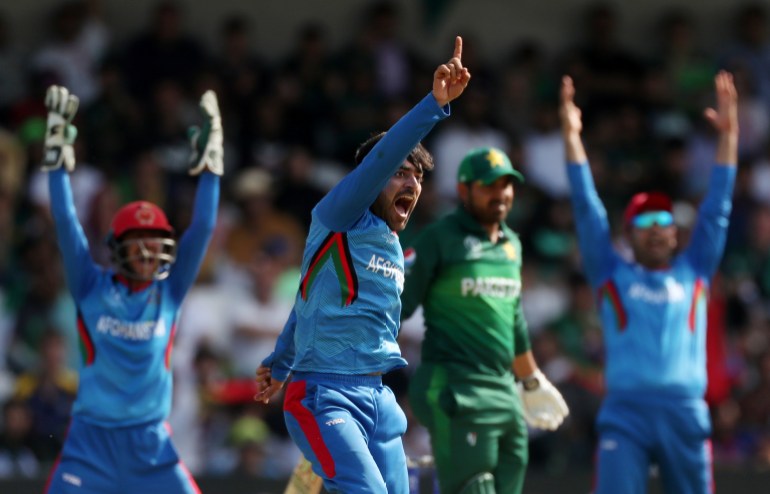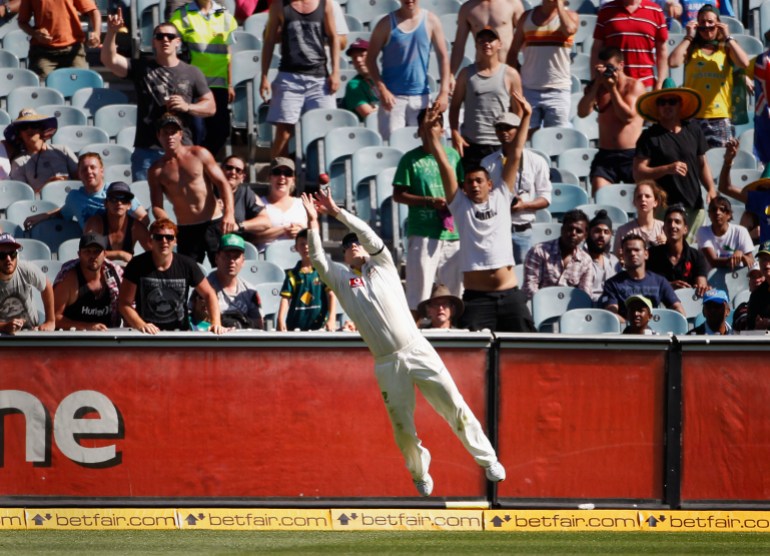Unleash bowlers, scrap umpire’s call: Rules cricket needs to change
Free hits, umpire’s calls and over limits are among five rules Al Jazeera thinks should be done away with in cricket.
Twelve months ago, the Marylebone Cricket Club (MCC), guardians of the laws of cricket, brought new laws into the sport while tweaking some existing ones.
From replacement players and dead balls to banning non-striker runouts and the application of saliva on the ball, cricket underwent significant changes.
But there’s always room for more. Here are five more rules that Al Jazeera thinks cricket needs to change.
1. Ban free hits
Cricket is a batters’ game, regardless of what format it is being played in or the status of the match in question. The crowd’s love for boundaries, high scores and seeing the ball in the stands has often been touted as the reason behind authorities tilting it in the favour of batters.
A batter often gets away with mistakes – a dropped catch, an edge dropping short, hit-and-miss. However, there are penalties aplenty for a bowler, including when they overstep, resulting in not only an extra run and the batter not being given out but also a free hit that follows.
If a batter is allowed to get away with an error, there is no need for an extra penalty for the bowler after a little stretch of the foot.
The one rule of Free Hit = make it count.
And #TowhidHridoy does so handsomely! 🫡🙌A whack straight down the ground gives #Bangladesh‘s innings some much-needed momentum! 💪
Tune-in to #AsiaCupOnStar, LIVE NOW on Star Sports Network#SLvBAN #Cricket pic.twitter.com/Rn2LTIc4Io
— Star Sports (@StarSportsIndia) September 9, 2023
2. Stop batters getting a second chance
We’ve established it’s a batters’ game; from limiting the number of bouncers in an over and the number of new balls from both ends in ODIs, to imposing fielding restrictions and over limits for bowlers.
So why is a batter allowed a second chance to stop the ball from hitting the stumps after there has been an attempt to play it and it comes off the bat or ricochets off the body towards the stumps?
Since a batter is penalised for obstructing or impeding a throw, why is a likely wicket-taking opportunity denied in this way? The fact that the ball is stumps-bound means the bowler has clearly done something right.
Lay down the Eminem rule: You only get one shot, do not miss your chance to blow …
3. Do away with over limits for bowlers (at least in ODIs)
Let’s talk about over limits in detail. Why do we have them?
Batters, if they’re good enough, can go on for 20 or 50 overs (depending on the format) to show their worth and stack up records. Bowlers can’t.
While watching Rohit Sharma or Ben Stokes make it rain sixes for the majority of the innings is immensely rewarding for cricket lovers, the same opportunities should be offered to Rashid Khan’s wizardry or Shaheen Shah Afridi’s curlers.
If the batters aren’t forced to return to the dressing room, why are the bowlers confined to the boundary when they could conjure up as much magic and excitement as the batters?

4. Stop fielders touching the ball outside the boundary
An aerial shot heads for the crowd. The fielder times a jump perfectly, pushing the ball in the air and back into the direction it came from. They jump back into the field of play to complete a catch or throw it back to teammates if a catch is not possible – either way, a four or six has been prevented. The agility, presence of mind and athleticism are commendable, but that should have been a boundary.
The batter should not be penalised for the ball not touching the ground (or the advertising boards) after crossing the boundary.
Cricket should follow football’s example, where a goal is given when the whole ball crosses the line.

5. Scrap the umpire’s call
A review is taken and all eyes are on the big screen. Ball tracking shows the ball hitting the stumps. But is it out or not out?
Well, that depends on what the on-field umpire said in the first place; the umpire’s original judgement can overrule the judgement of the technology, for example, a “not out” in a situation in which the ball is shown clipping the stumps in an LBW.
Former head of the ICC Cricket Committee, Anil Kumble, has said that it’s “important” the umpire’s call remains part of the review system.
“The principle underpinning DRS [Decision Review System] was to correct clear errors in the game whilst ensuring the role of the umpire as the decision-maker on the field of play was preserved, bearing in mind the element of prediction involved with the technology,” Kumble said.
“Umpire’s call allows that to happen, which is why it is important it remains.”
But the soft signal – whereby on-field umpires indicated an unofficial verdict on a potential wicket while sending a review to the TV wicket – has been taken out of the game. So the umpire’s call can easily follow suit.
More than 75% part of the ball was missing the stumps and still, an umpires call.
They have made LBW a joke really.
Absolute nonsense this is.#ENGvIND #RohitSharma pic.twitter.com/Mc2rgfDNjb— Akshat (@Akshat_Cricket) August 27, 2021



